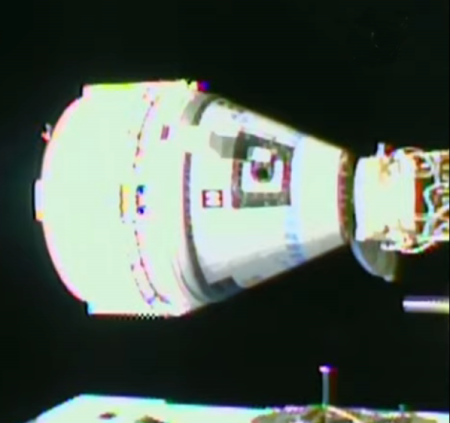Roscosmos forbids its astronauts from using Europe’s robot arm
In response to the final decision this week by the European Space Agency to officially end its cooperation with Russia on its ExoMars mission, Roscosmos today forbid its astronauts from using Europe’s new robot arm that was recently installed on the Russian Nauka module of ISS.
Russia’s crew onboard the International Space Station (ISS) will stop using the European ERA manipulator arm in response to the European Space Agency’s (ESA) refusal from cooperation on the ExoMars project, CEO of Russia’s state space corporation Roscosmos Dmitry Rogozin said on Tuesday.
“In my turn, I instruct our ISS crew to stop using the European Robotic Arm (ERA). Let [ESA Director General Josef] Aschbacher along with his boss [EU foreign policy chief Josep] Borrell fly to space and do at least something useful in their entire lives,” he wrote on his Telegram channel.
The arm was designed to work on the Russian part of ISS, so it appears this decision by Rogozin is an example of someone cutting off his nose to spite his face. It essentially reduces Russia’s capabilities on the station.
As for ExoMars, it is unclear what will happen to the lander that Russia built to put Europe’s Franklin rover on Mars. Roscosmos has said it might proceed with its own mission to Mars, using that lander, but it has not made the full commitment to do so.
In response to the final decision this week by the European Space Agency to officially end its cooperation with Russia on its ExoMars mission, Roscosmos today forbid its astronauts from using Europe’s new robot arm that was recently installed on the Russian Nauka module of ISS.
Russia’s crew onboard the International Space Station (ISS) will stop using the European ERA manipulator arm in response to the European Space Agency’s (ESA) refusal from cooperation on the ExoMars project, CEO of Russia’s state space corporation Roscosmos Dmitry Rogozin said on Tuesday.
“In my turn, I instruct our ISS crew to stop using the European Robotic Arm (ERA). Let [ESA Director General Josef] Aschbacher along with his boss [EU foreign policy chief Josep] Borrell fly to space and do at least something useful in their entire lives,” he wrote on his Telegram channel.
The arm was designed to work on the Russian part of ISS, so it appears this decision by Rogozin is an example of someone cutting off his nose to spite his face. It essentially reduces Russia’s capabilities on the station.
As for ExoMars, it is unclear what will happen to the lander that Russia built to put Europe’s Franklin rover on Mars. Roscosmos has said it might proceed with its own mission to Mars, using that lander, but it has not made the full commitment to do so.





